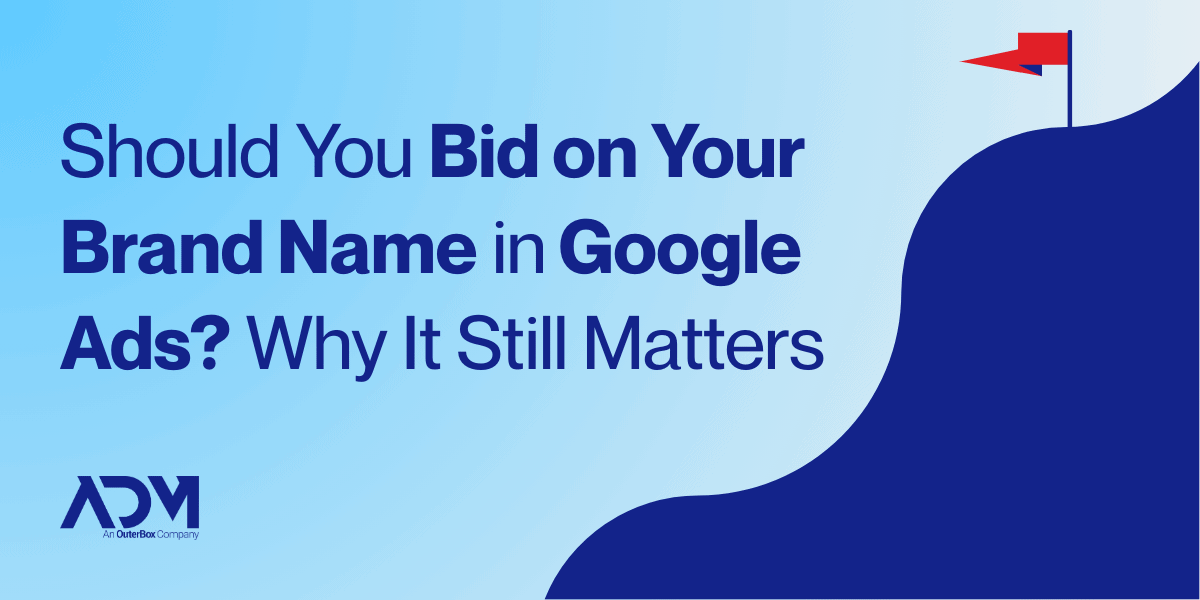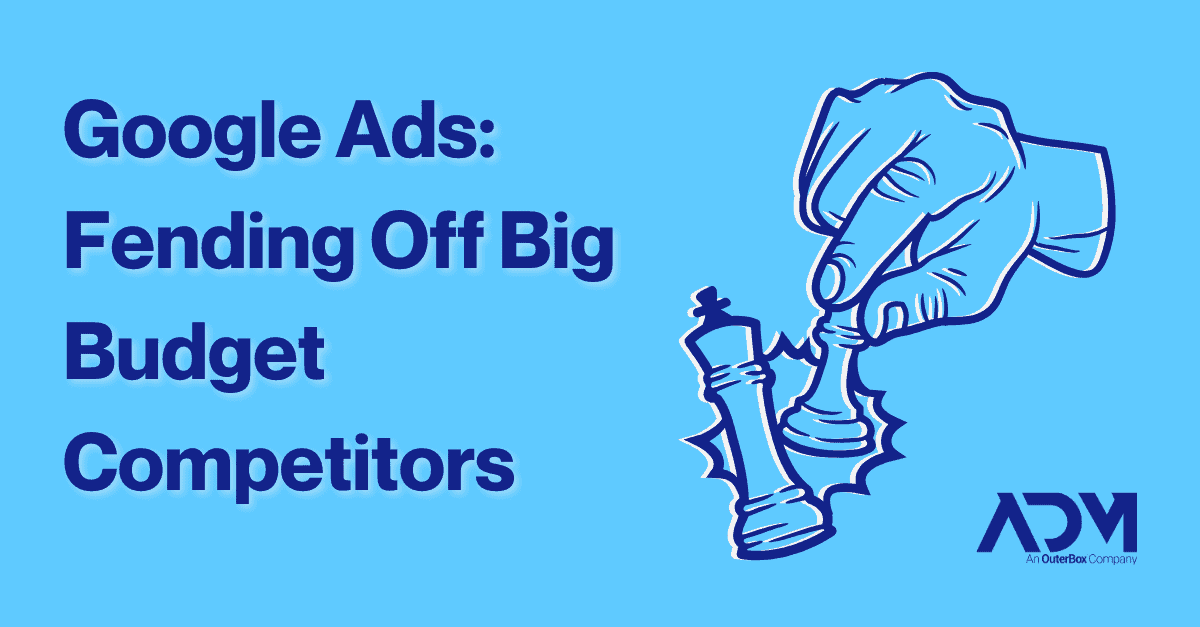Shoppers continue to start their holiday shopping earlier and earlier, meaning marketers need to strategize their holiday approaches accordingly. CivicScience reports that 16% of US consumers begin their holiday shopping as early as June, and 50% intend to start before Thanksgiving.
This shopping behavior has been encouraged, in part, by brands themselves—who have begun to employ longer and longer promotion periods in advance of Black Friday and Cyber Monday. To stay competitive, brands should intend to have their holiday SEM strategy finalized early in Q4, well in advance of the Black Friday/Cyber Monday sales events.
The Importance of Planning Your Holiday SEM Strategy Early
More than an occasional seasonal promotion, the holiday season is a full-court press. For many eCommerce brands, Q4 is a make-or-break time period. Early planning and implementation is vital and should be based on quantitative research (for forecasting) and qualitative research (to define messaging for both existing and new customers).
Creative turnaround time: Creative can take time to develop and refine to support holiday offers with clients. To avoid last second launches and periods of customer interest prior to peak demand times in November, it is wise that brands begin to compile creative by audience levels in advance. From text, imagery, and video, it is important that messaging is consistent and most importantly that there is client approval.
Budget planning and projections: Media teams should review the prior holiday seasons trends and strategies to assess what worked, what did not work, and what can be improved upon. This analysis shines the light on things like peak demand times, which in turn can inform media teams on when to begin awareness strategies and increase spend in high demand campaigns to capture all search volume.
Goal Alignment and Expectations: With a high demand period and higher-than-average conversion rates, it is important to align on not only the channel specific goals but also what the business wants to achieve during holiday times. Whether these are return on ad spend (ROAS), customer acquisition cost (CAC), cost per acquisition (CPA), or a volume goal like total purchases, setting distinct goals ahead of time will dictate strategy and reduce friction for making adjustments on peak days.
Driving Google Ads Momentum Prior to Black Friday
In order to build awareness and new customer volume prior to the holidays, brands should use sophisticated awareness strategies to ensure that they have the highest intent customers in the funnel come peak sales periods. During October and November, shoppers have more openness to new brands. As it closes in on peak buying time, most shoppers have a clear idea of what and where they are looking.
Google Ads has multiple high quality creative formatted campaigns to support the October-November time period. Two months out from peak buying time, we recommend testing video campaigns (like Demand Gen and Video Reach) to inspire these early shoppers. Prioritize using creatives that introduce the brand while also pairing that with holiday creative.
Search volume around gifting has begun to trend upwards much earlier over the last few years. According to Google, 70% of gift-related searches that contain the phrase “black friday” actually occur in October. Brands should rely on keyword planner and other third-party search trend tools, like SEMRush, to begin catching that traffic early and often.
At ADM, we begin these conversations with clients before October. We will run micro tests to see how certain audiences behave so that way we have a list of strong audience verticals that we want to use during the holiday season.
Increased competition does not necessarily mean you will see metrics like ROAS or CPA driving up dramatically—because during the holiday push, Conversion Rate also jumps across the board.
Managing Budgets During Black Friday and Cyber Monday
In order to have the most successful Q4 and Black Friday/Cyber Monday sales period possible, your marketers need to be active in their bidding and budget management. If you are too conservative with your campaign targets (in those that use Target CPA or Target ROAS) and unwilling to adjust budgets, you may see great efficiency—but low purchase volume. If your campaigns are delivering results but being capped by modest budgets, it’s well worth increasing spend and reaping the benefits until the point where efficiency stagnates
By analyzing your brand’s historical data during these time periods, you can set yourself up for success. Certain industries and product verticals may see a smooth increase leading into the week of Black Friday and Cyber Monday, whereas others may see trends that increase or decrease dramatically day-over-day. Investigate not just your overall trends from years’ past, but also how different product lines performed over time so strategy can be tailored at the most granular level possible.
This analysis is the first step in an effort to understand spend allocation for the coming holiday season. If the above analysis shows large increases on Black Friday and Cyber Monday, plan to build-in increase budget increases for that week to capture increased volume and not run out. Some brands even uncap their budgets on these days to have no concern—as long as there’s demand, there will be spend.
As long as you have a communicative account team that commits to consistent updates and data analysis, budget can be properly managed on these days according to the clients goals. Another tool that can be helpful is using automated budget rules to ensure the account is pushing and pulling at the right time.
Tips for Deploying Holiday-focused Google Ads Creative
Google Ads is so much more than paid search—your strategy will likely include Performance Max campaigns, video campaigns, and other video or display elements. It’s important not to take your Google Ads creative for granted when planning a holiday SEM strategy. Here are some things to keep in mind:
Start Planning Early: The first tip for creative success during the holiday season is to begin planning and creation early. This allows time to address inevitable iterations and feedback. Brands also need specific creative messaging and assets for each phase of the season: Pre-Black Friday awareness, Black Friday, Cyber Monday, Cyber Week, and the final shipping days before Christmas.
Leverage Google’s AI Tools: Harnessing Google’s AI tools to enhance or tailor existing creative for the holidays can help brands with limited creative output present strong, relevant imagery. This is especially useful for ensuring your content stays fresh and engaging throughout the holiday season.
Make it Clear That They’re Holiday Ads: Incorporating seasonal elements into your creative helps capture both new and existing users. Whether working on video or static assets, make sure your holiday offers are clear in the ad copy, extensions, and more. A confusing or overwhelming offer may deter users from engaging.
Focus on Vertical Assets in YouTube Campaigns: Use vertical assets in YouTube campaigns! YouTube Shorts provide a great opportunity for user engagement. It’s amenable to much of the same content you will find on TikTok or in Instagram Reels, so it may be worth testing similar content across platforms during the holiday rush.
Use Demand Gen Campaigns Correctly: Demand Gen is a relatively new and powerful SEM campaign type with a lot of advantages—and some quirks. For instance, text overlays in image assets may result in Demand Gen ad disapprovals, so it’s wise not to reuse the same creative from other campaign types. Also make sure to utilize all available formats—square, vertical, and horizontal—to maximize the reach of your creative.
Drive Urgency with Dynamic Headlines: Create urgency during Black Friday and Cyber Monday by using dynamic headlines in your ad copy. A great option is the dynamic countdown, which displays the time remaining for users to take advantage of the live offer, encouraging immediate action.
Maintaining Momentum After Black Friday
Just as you analyze prior years’ performance and spending trends leading up to and during Black Friday, it’s important to also understand what worked and what didn’t in the period following.
You will need to adapt your budgets again following that sales surge, with plans to stair-step your spending back up leading to the week before Christmas—typically December 20th is the ground shipping cutoff date. Build a strong weekly spending forecast based on your historical analysis, but maintain the willingness to shift course if different trends emerge.
Each holiday season is different, and you need to be able to look at the big picture in order to succeed. For example, 2024 is an election year and Black Friday/Cyber Monday fall later in November than they usually do—which means 5 fewer shopping days after them, which you will need to factor into your forecast.
After Black Friday and Cyber Monday, it’s important to shift your creative messaging to continue driving urgency by focusing on your final sales offers and shipping or promotion cutoff dates.
The post-Black Friday/Cyber Monday period is also a good time to test remarketing towards users that have come in from your prior advertising but not converted (like site visitors and cart abandoners). With competition and user intent at its highest point, it’s valuable to double back on users who have made it past the prospecting stage in order to find additional purchases.
Avoiding SEM Pitfalls this Holiday Season
The biggest pitfall to avoid when planning and executing a holiday strategy is being reactive instead of proactive. It’s vital to be agile with your budgets and creative: If you see a trend beginning in a specific campaign set that you could capitalize on, see how you can maximize spend in that area and apply similar messaging and approaches in other campaigns.
If you’re looking for an SEM agency partner that excels in both advance planning and quick adjustments, consider reaching out to the team at ADM for a conversation about your marketing. No matter the season, we’re always game for a simple consultation or comprehensive audit.



